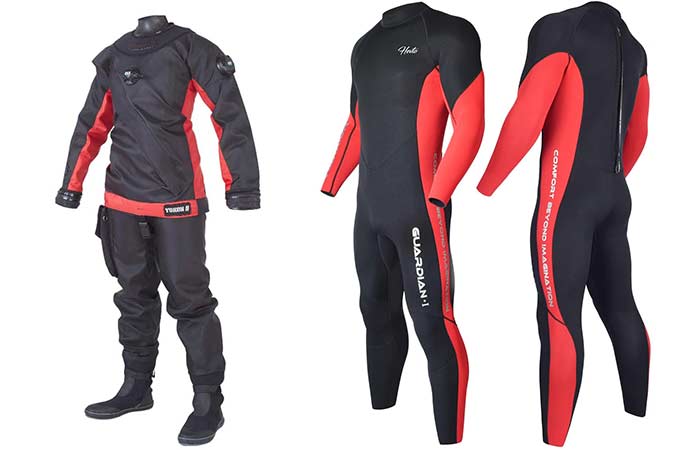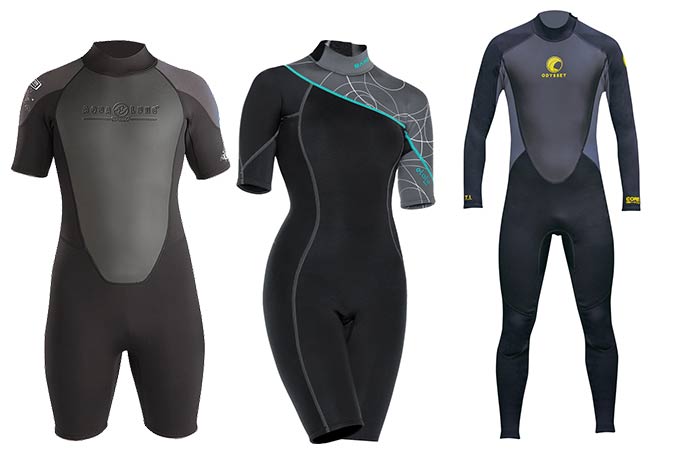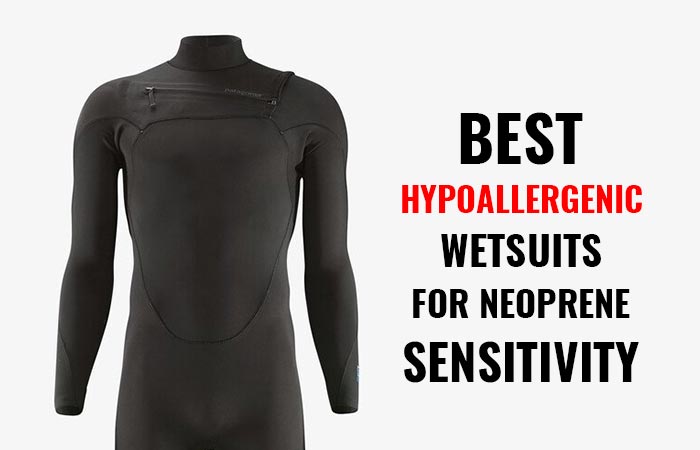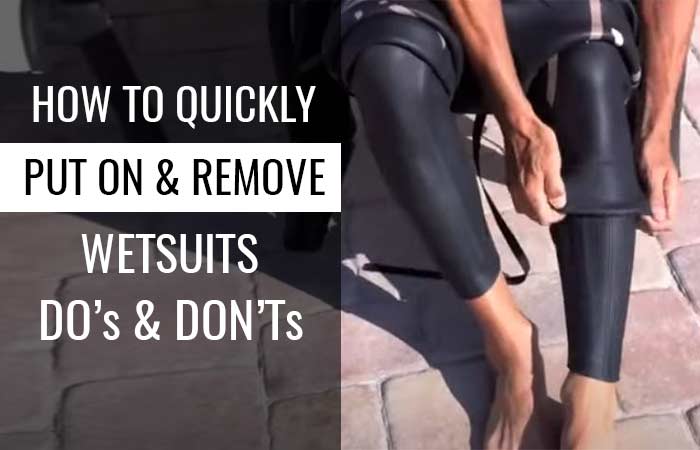Wetsuit Storage and Care Tips
Wetsuits aren’t cheap. That calls for extreme care whenever you manage to buy one. Most notable is the fact that wetsuits are made of neoprene that is stretchable. This material has different properties to normal clothing and will thus need to be cared for differently as well.
In this guide, we consider all the stages your wetsuit goes through in its lifetime. That’s from the first time you unwrap it after buying, first time use, when wearing it, after using it and the storage part of it as well. We also deal with the repairs and even how to deposit of it once it has come to the end of its useful life.
Before, During, and After Use Wetsuit Care Tips
The care tips are as follows:
Before Use
Before pulling on your wetsuit, do the following:
- Avoid snagging it with your fingernails or over jewelry. While neoprene is a relatively tough material, it can still get torn when exposed to high pressure such as too much stretching and over sharp objects.
- Choose to move the suit over the body in small incremental sections rather than pushing it too much at once.
- Always check the wetsuit for holes. Small holes can become larger ones when stretching the wetsuit as you put it on. In general, holes in your wetsuit aren’t a good thing as they reduce its ability to protect you. We’ll talk about repairing them in the sections below.
- Wear it from the legs and arms for a good fit.
- Make sure the wetsuit is tight and fitting but still comfortable for the best protection and comfort in the water.
- If neoprene is harsh to your skin, use either a rash guard or favorable cream to prevent chaffing and other adverse effects.
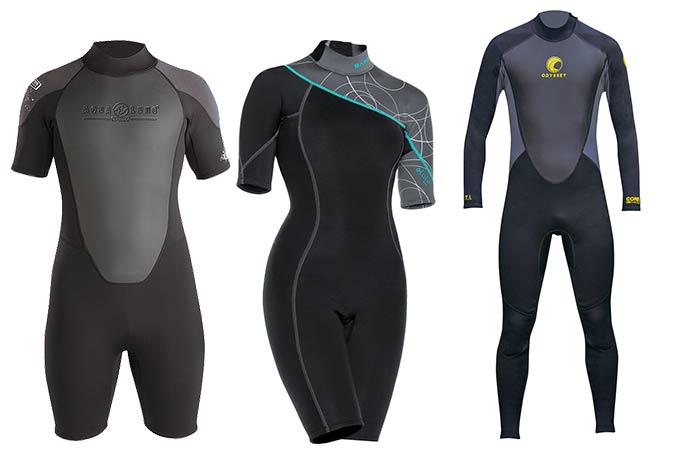
During Use
While the wetsuit is on your body, do the following:
- If you’ll be staying out of the water for a long period of time, change out of the wetsuit since the sun will damage the neoprene.
- Avoid peeing in the wetsuit as much as possible. While it seems harmless, pee damages the neoprene overtime.
- Never change the wetsuit when on the sand. Sand particles easily lodge into the small spaces between the neoprene sections and are quite hard to get rid of.
- It goes without saying that a wetsuit adapts to the shape of your body. As such, don’t lend it to anyone who’s larger than yourself as it’ll stretch and become baggy for you.
- Surf wax will stick to the wetsuit and not a recommended thing to use with the suit.
- Never use your wetsuit in chlorinated water. The chlorine will damage the neoprene in your wetsuit.
- Velcro also damages your wetsuit with time. Minimize contact between neoprene and Velcro as much as you can.
After Use
When you’re out of the water and want to head home, follow these tops:
- Get out of the wetsuit slowly and gently to avoid damaging it. Again, don’t snag it over fingernails and jewelry as you’ll damage it in the process.
- Once you’re out of it, soak it for up to 20 minutes in clean warm water. The water shouldn’t be hot since you’ll damage the neoprene.
- After the soaking, rinse it with clean fresh water that’s a little warm as well.
- Dry it inside out away from direct sunlight.
- For drying purposes, use a thick hanger to prevent damaging the neoprene at the shoulders. You can also hang it by the midsection over a thick rope.
- If rinsing alone isn’t enough, you can wash it with baby shampoo, a wetsuit cleaner or other favorable cleaner. Never use aerosols, brushes or harsh cleaning agents as you’ll easily damage it.
- Never use a washing machine to clean your wetsuit.
- Don’t also use a dryer or iron box with your wetsuit.
Wetsuit Storage Tips & Care
The storage tips for your wetsuit include the following:
- Store the wetsuit in a cool and dry place away from direct sunlight.
- Wetsuits can be stolen. You should thus store it in a protected place.
- Do not fold the wetsuit even when it’s only for a short period of time since it damages them.
- Either hang it on a thick hanger or rope, or put it in a place lying flat.
- Store it away from chemicals such as aerosols, solvents, oils and others. Neoprene has rubber-like properties and can thus be damaged by all these.
- Fumes from vehicle exhausts also damage the suit. You this need to store them away from an active garage.
- Avoid storing them in rooms with too much heat.
- Don’t store your wetsuit in the trunk of your car on a hot day as the heat will damage it.
- Whether it’s for a short time or for longer, don’t ball up your wetsuit (don’t roll it up into a ball) as you’ll damage it.
Repairing the Wetsuit
For repairs to your wetsuit, follow these tips:
- Lubricate zippers with beeswax and not petroleum products as the latter will damage the wetsuit.
- For holes and tears, either have the wetsuit professionally repaired or use neoprene patches and neoprene glue.
- Whenever you notice any damage on the wetsuit, have it repaired immediately to avoid further damage.
Depositing Of the Wetsuit
At the end of its life, you can do away with the wetsuit as follow:
- Turn it over to a recycler since it can be used to make newer wetsuits.
- Don’t throw it in a landfill since it’s not biodegradable. It’ll only harm the environment.
- You can repurpose it into a yoga mat, beer holder or even a laptop bag with some work on your end.
Best Wetsuit Care Accessories
Some of the best accessories to use with your wetsuit are as follows:
1. Storage/Racks
The best wetsuit storage racks include:
- T-Rax wetsuit rack
- Malo’o Portable Wetsuit Drying Rack
- Onefeng Sports wetsuit drying rack
2. Storage Hangers
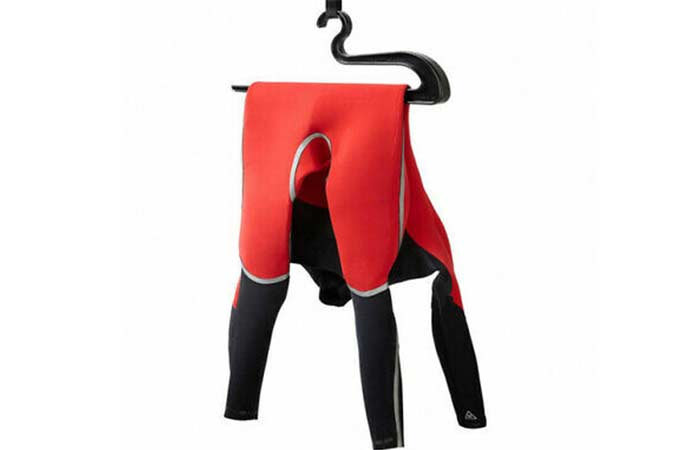
- Ho Stevie! Wetsuit Hanger
- Niiwi Foldable Wetsuit Hanger
- YUENA CARE Wetsuit Hanger
3. Storage Bags
- Ho Stevie! Durable Wetsuit Changing Mat/Waterproof Dry-bag
- Onefeng Sports Wetsuit Changing Mat/Waterproof Dry-bag
- Finessci Surf Wetsuit Changing Mat/Waterproof Dry-bag
You can pair your wetsuit with any of these accessories to elongate its life and make it easier to use it.
More on Wetsuits
- How do Wetsuits Work?
- What are Wetsuits Made of? Types & Top Brands
- Wetsuits Colors: Why Black? What is the Best Color?
- Wetsuit vs Dry Suit
- How to Properly put on a Wetsuit, Remove+ Dos & Don’ts
- What to Wear Under Wetsuit: Female, Men & Triathlons Undergarments
- How Tight/Fitting should a Wetsuit be?
- Wetsuit Thickness Guide + Temperature Chart
- How to Wash a Wetsuit + Best Cleaners, Shampoo & Soap
- How to Dry a Wetsuit + Best Drying Hangers & Racks
Best Wetsuits

